Charger Fenix ARE-D1
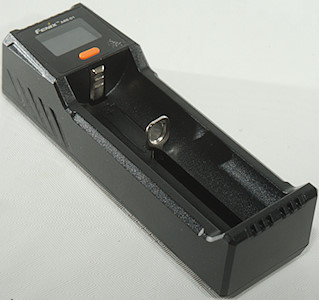
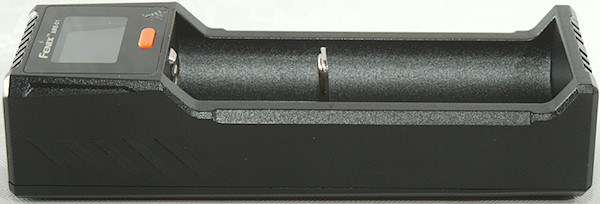
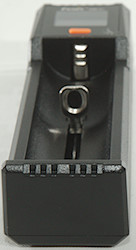
This is a single cell USB powered charger with 3 current settings from Fenix. It has a display and can also be used as power bank.
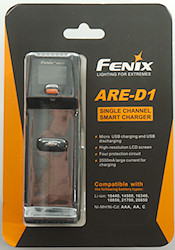
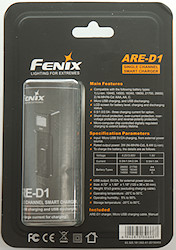
The charger comes in a blister pack with specifications on it.
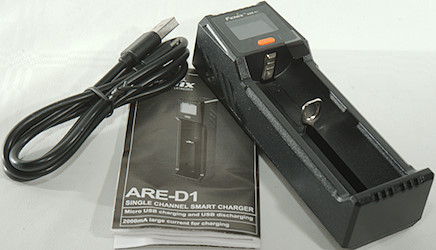
The box contained the charger, a USB cable and a instruction sheet.
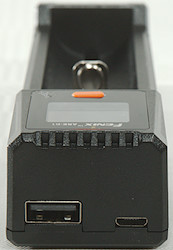
The charger is powered from a micro USB connector and has a USB-A connector for power bank output.
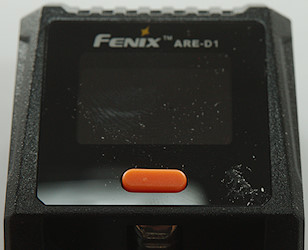
There is a small display on the charger and a single button.
When putting a battery in the charger the button is used to select current.
With a LiFePO4 battery hold the button down until the LiFePO4 turns on.
During charging and after the button select what to display.
It can turn USB output on if needed.
Hold down when activate USB output to select low current mode (USB 5V will continue to flash).
Hold the button down to turn display off.
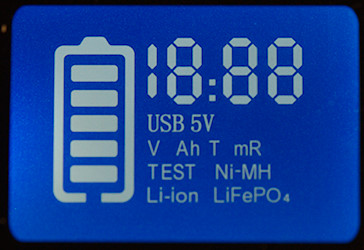
All segments on the display is shown during power on. The charger do not use all of them.
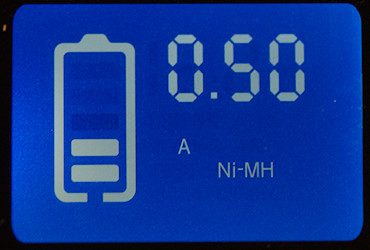
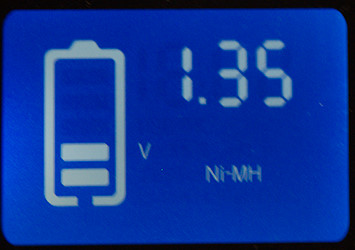
Current and voltage displays
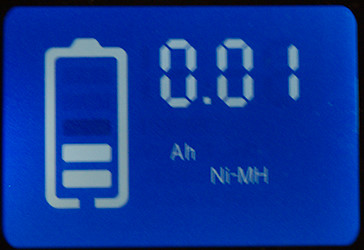
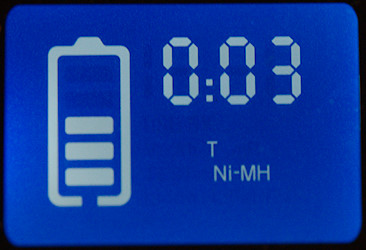
Capacity and time displays.
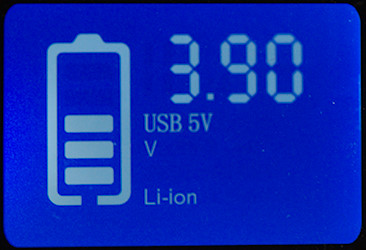
When the power bank function is used the display show battery voltage.

The charger has specifications on the back.
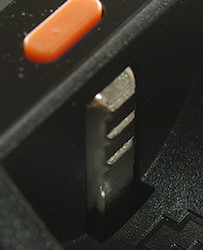
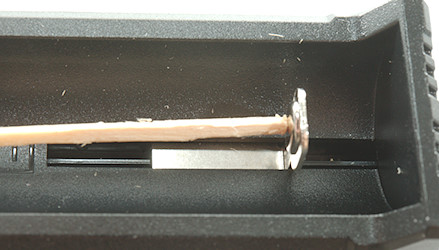
The battery slot is the standard slide construction. It works from 29.5mm to 77.7mm, this is all battery sizes.












The charger can handle 69 mm long batteries including flat top cells.
Measurements
- Hold down button to turn display off.
- The charger will drain about 0.3mA from a LiIon battery when not powered.
- Charge current is locked a few seconds after charging is started.
- At low voltage (<0.8V) the charger will report error after some time.
- The voltmeter is not very precise at low voltage.
- Below 2 volt the charger assumes NiMH, above LiIon
- Above 0.9V the voltage display is within 0.02V
- LiIon can be charger with 0.5, 1 and 2A
- NiMH can be charger with 0.5 and 1A
- Charger will not restart if voltage drops.
- Idle current from USB is 15mA with display on and 12mA with display off.
LiIon charging
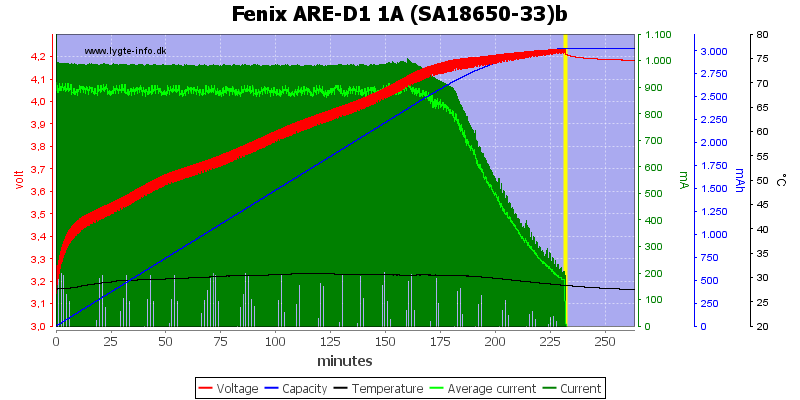
The charge curve looks to be a CC/CV with about 170mA termination current, but the charger is pulsing the current.
Display shows 3.04Ah and 3:53
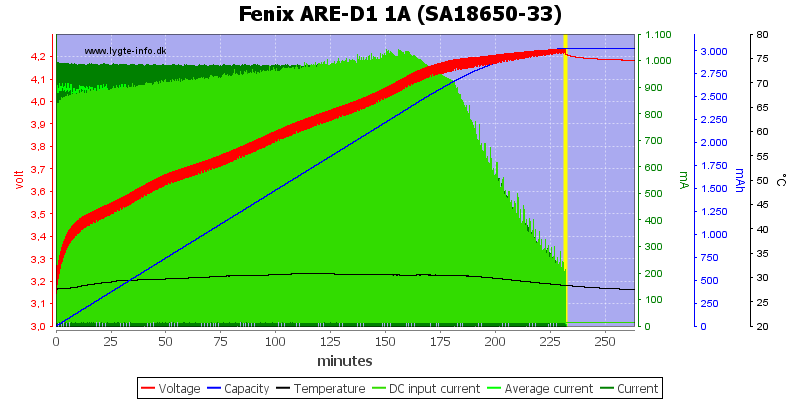
Same curve as above with input current shown.
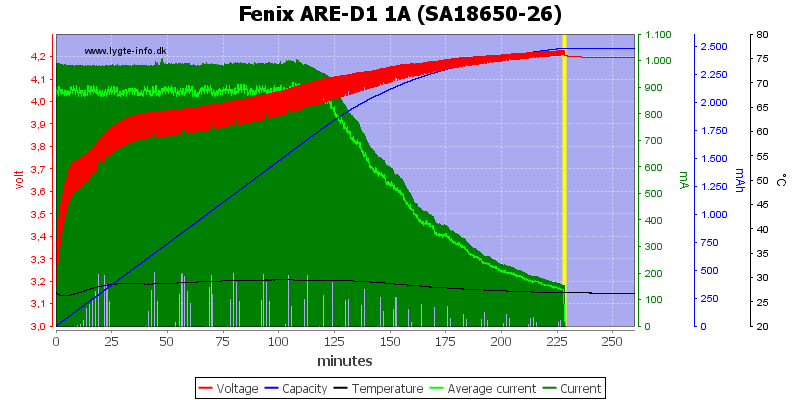

These two other batteries looks similar.
Display shows 2.46Ah, 3:49 and 2.64Ah 3:26
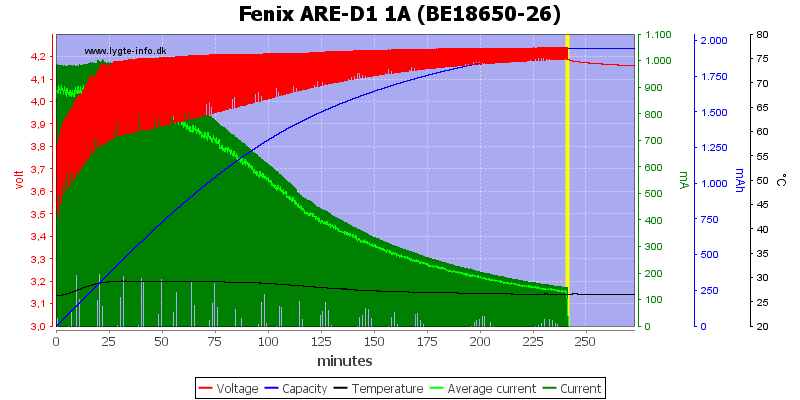
The older battery goes into CV mode fairly soon as expected.
Display shows 1.87Ah and 4:03

The 0.5A mode do not change the termination current.
Display shows 2.83Ah and 6:37

With a 14500 cell the termination current is a bit on the high side.
Display shows 0.91Ah and 2:18
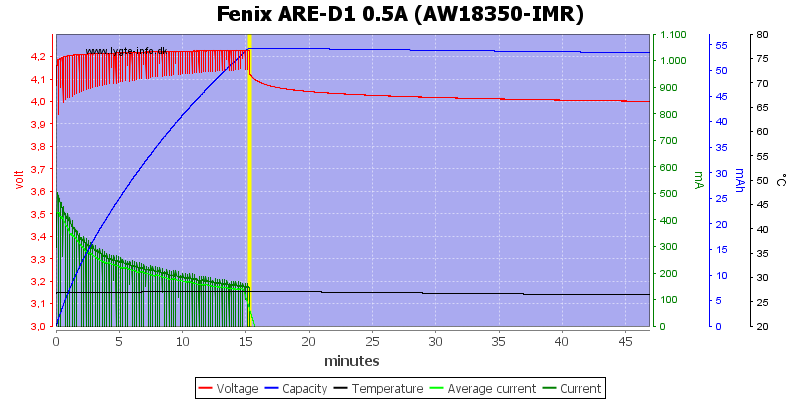
Even this old worn output cell is charged, but the high termination current do not help it.
Display shows 0.04Ah and 0:16
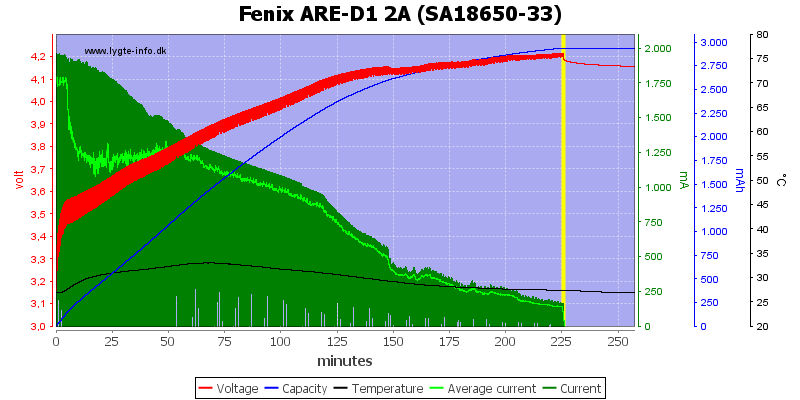
What about a 2A charge? It is only maintained for about 5 minutes, then the current drops to around 1.2A, not very impressive for a 2A mode.
Display shows 2.95Ah and 3:47
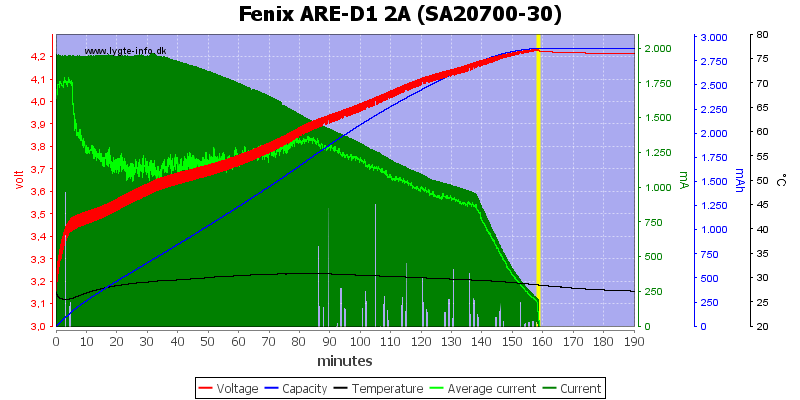
Another battery with 2A shows the same behaviour, it may be something temperature related inside the charger.
Display shows 2.97Ah and 2:40
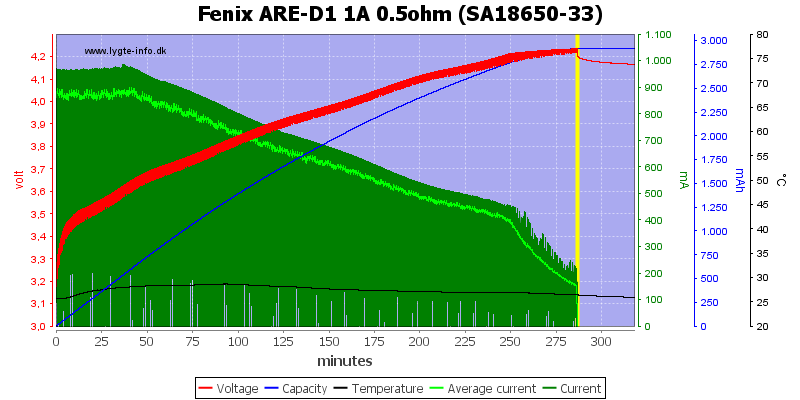
Adding 0.5ohm in series with the USB power to simulate a weak supply or long cable will slow the charger down, but not prevent it from charging.
Display shows 2.91Ah and 4:49
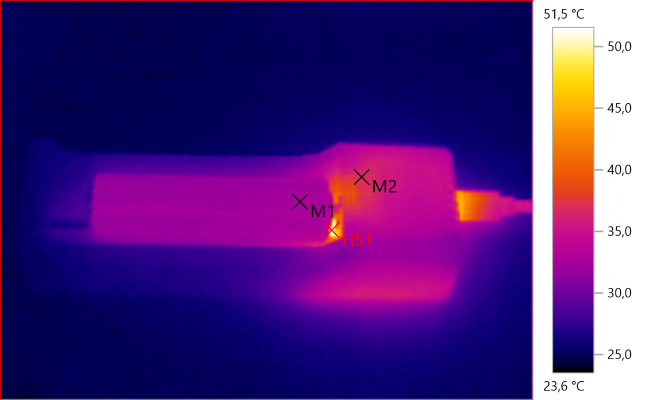
M1: 32.4°C, M2: 37.1°C, HS1: 51.5°C
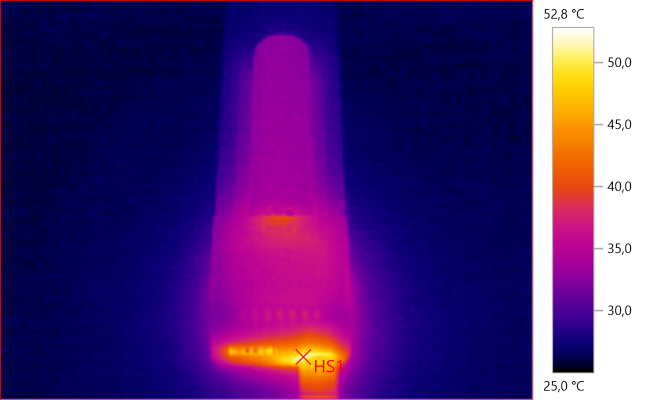
HS1: 52.8°C

The charger is very fast to start charging with LiIon batteries, probably because the processor inside the charger is already powered from the battery.
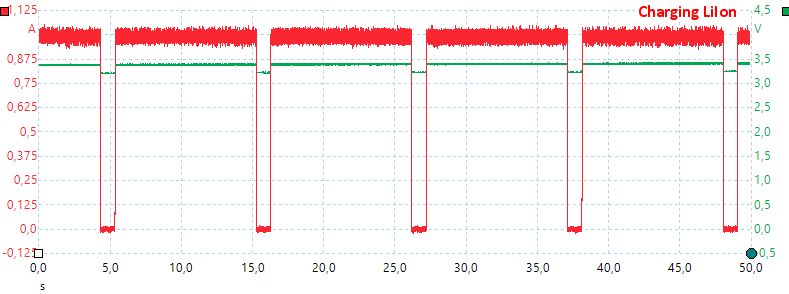
The charger pulses the current during charge.
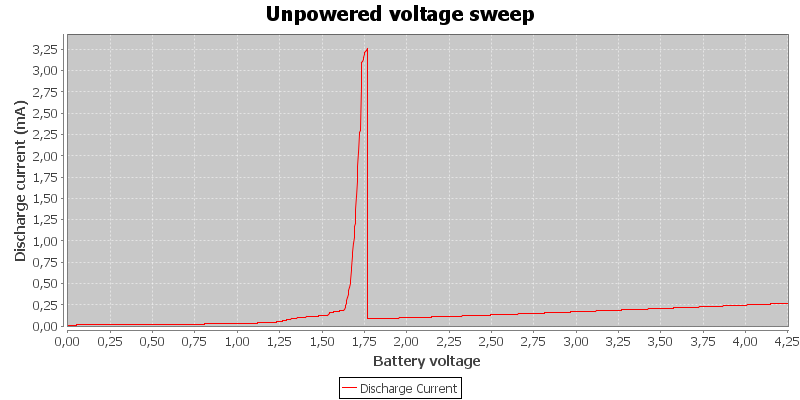
The drain from a LiIon battery is fairly low when charger is unpowered.
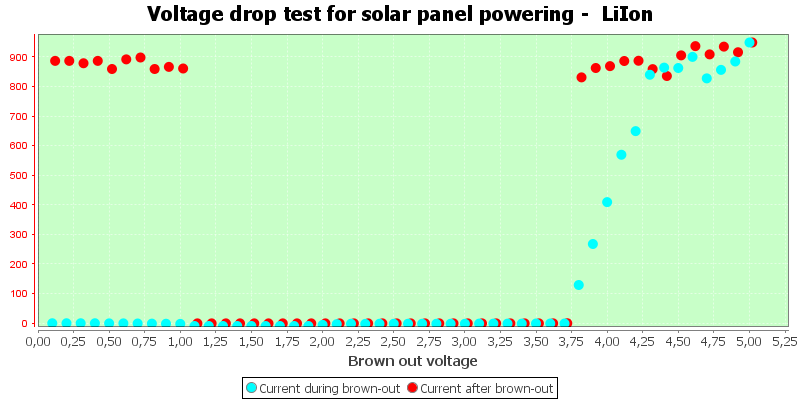
The charger do not like an unstable supply, it basically stop charging.
LiFePO4 charging
This charger list both 4.2V and 3.65V as charging voltage for LiIon and 3.65V is a typical voltage for LifePO4 and the display has a LiFePO4 annotation, but the manual do not say anything about how to select LiFePO4. Do the charger do it automatically?

A test with a LiFePO4 battery clearly shows that it do not! LiFePO4 batteries are fairly robust and do not take much damage from this treatment.
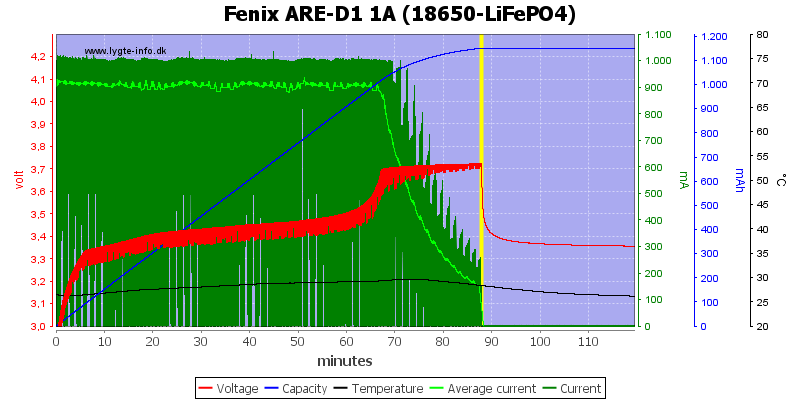
Holding the button down for some time switches to LiFePO4 and the charger do a nice job charging them.
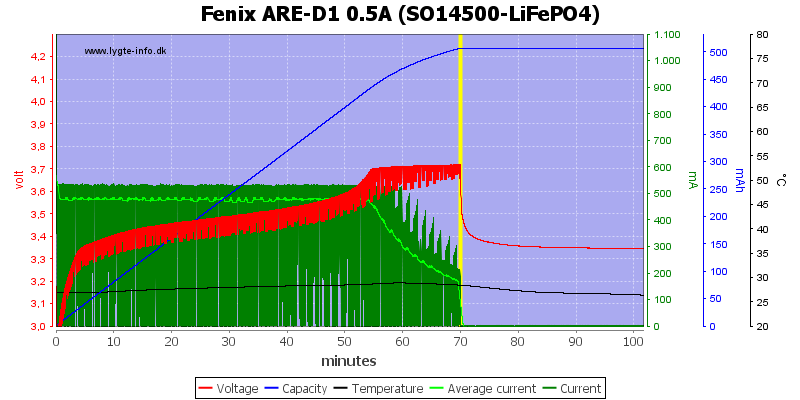
This also works with a smaller cell and lower current.
NiMH charging
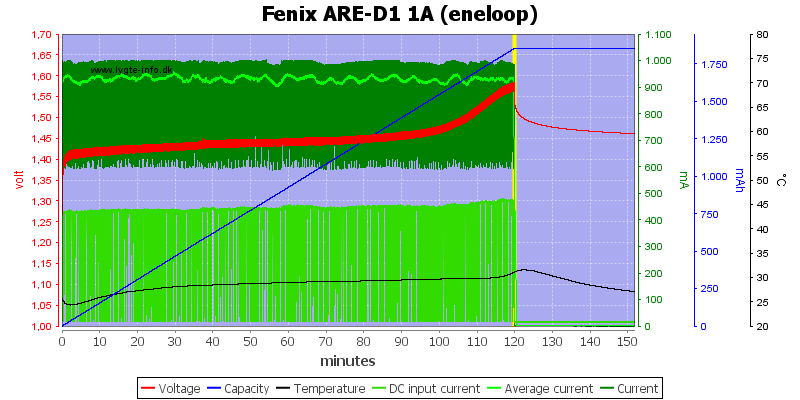
The NiMH charge terminates about where the battery is full
Display shows 1.88Ah and 2:01

On this battery the termination looks to be voltage.
Display shows 2.44Ah and 2:37
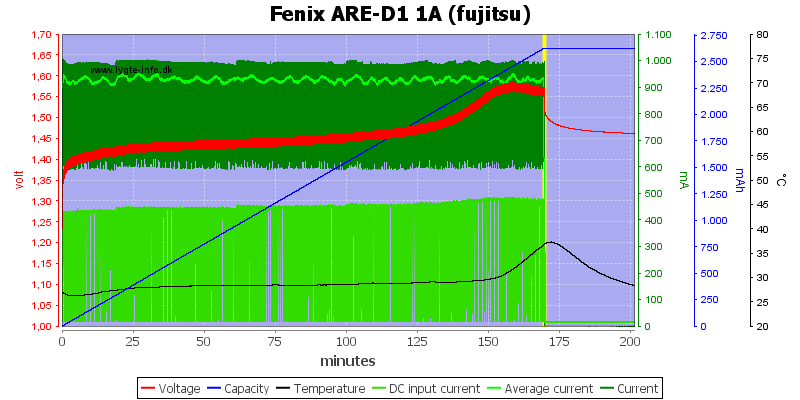
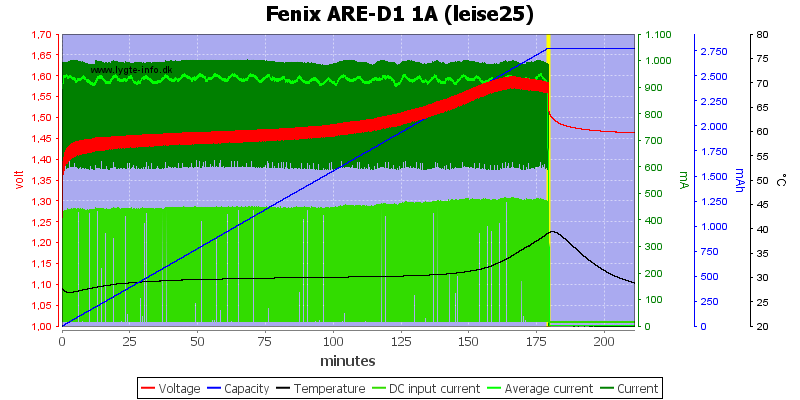
And on these two the charger uses -dv/dt termination.
Display shows 2.65Ah, 2:52 and 2.81Ah, 3:01
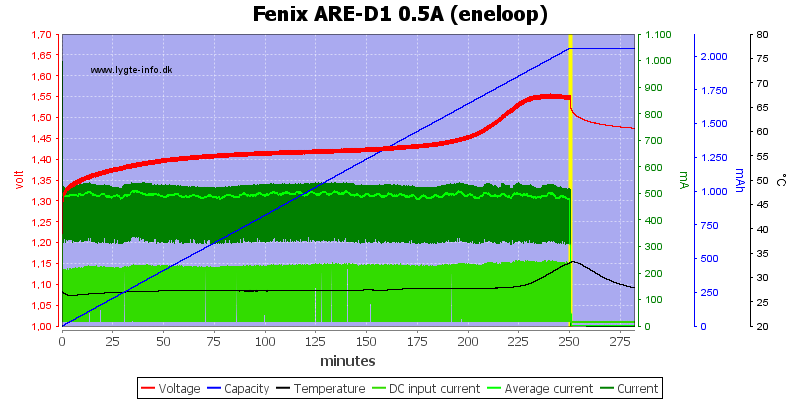
With 0.5A charge current the charger either use a -dv/dt or 0dv/dt termination.
Display shows 1.96Ah and 4:13

And with the AAA it is a voltage termination.
Display shows 0.69Ah and 1:28

A full battery was detected fairly fast on voltage.
Display shows 0.04Ah and 0:03
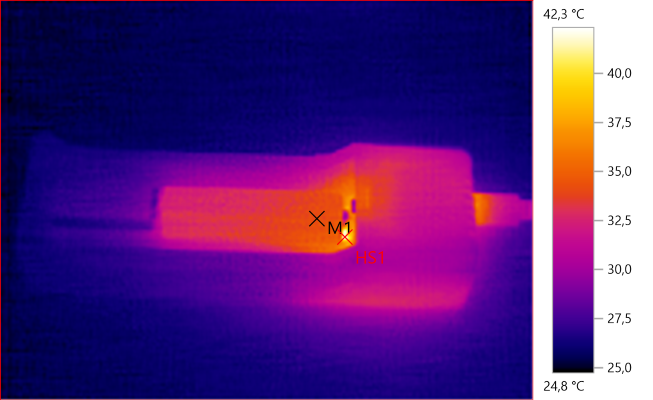
M1: 34.3°C, HS1: 42.3°C
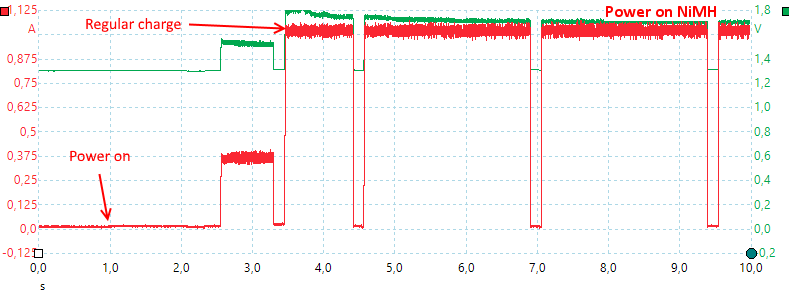
The charger is slightly slower to power on with NiMH, but still fairly fast. It uses the standard pulsing charging.
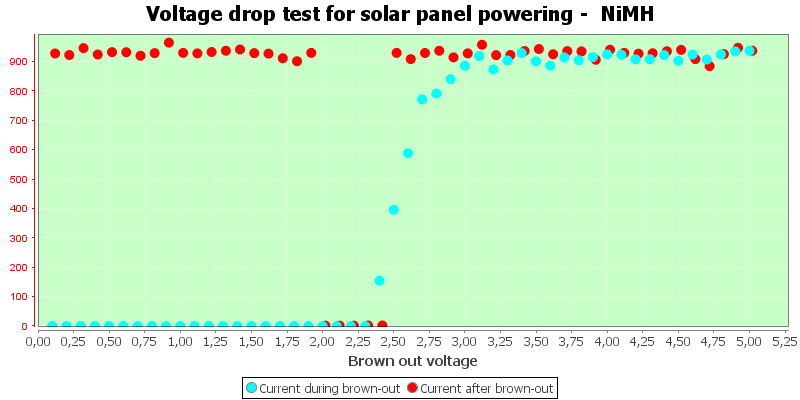
It works better with unstable power here, but it still lock up.
USB output
- USB output is turned off when the charger is powered.
- USB output will turn on when connected and is very sensitive.
- USB output turns of after 45 seconds when current is below 110mA
- USB output do not turn off when low current mode is selected.
- Charger uses about 19mA from battery to maintain display when in power bank mode.
- Display do first turn off at 2V in low power mode (5V output turns off at 2.7V).
- The charger will drain about 0.3mA from a LiIon battery when not powered.
- USB output is coded as USB charger (DCP)
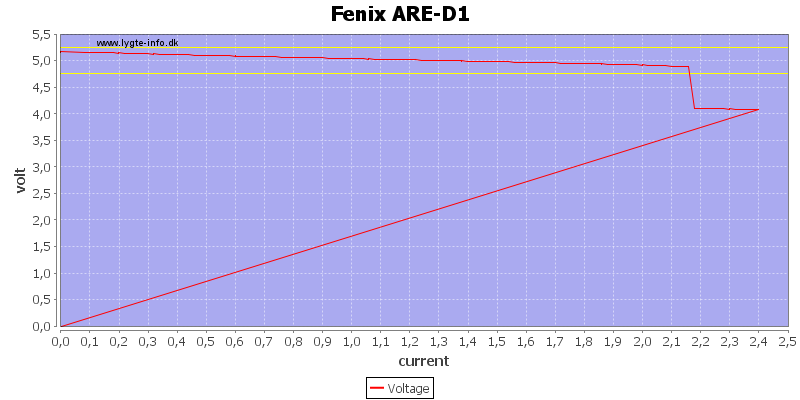
The charger is rated for 2A output and it can deliver it.

At 0.5A current (10ohm) the output voltage is stable until the battery is down to about 2.8V, then it turns off.
Sadly it will still draw some current and my 18650 was discharge to 2V during a 8 hours.
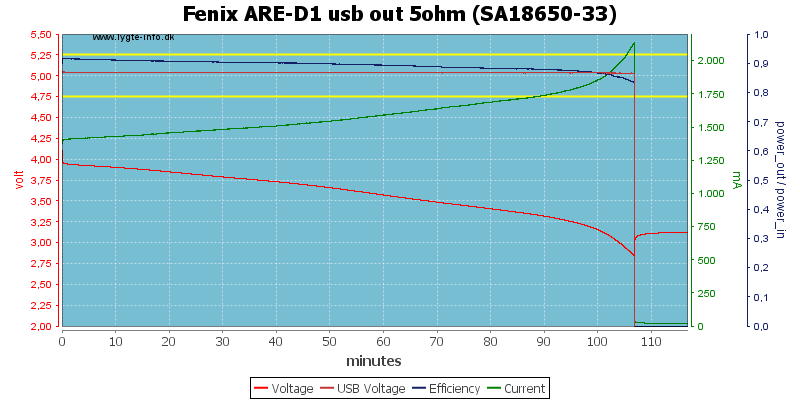
At 1A load (5ohm) it can also maintain output voltage until the battery is empty.
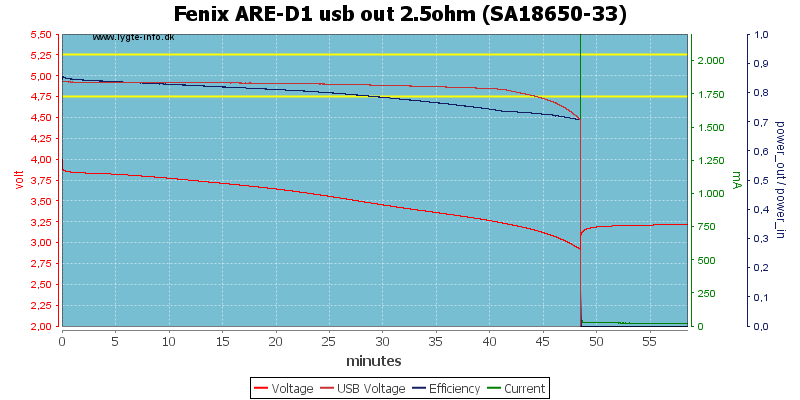
At 2A (2.5ohm) load it has some trouble just before the battery is empty, but it maintains output for more than 40 minutes.

The rms noise is 7mV and there is 78mVpp.

The rms noise is 10mV and there is 79mVpp.
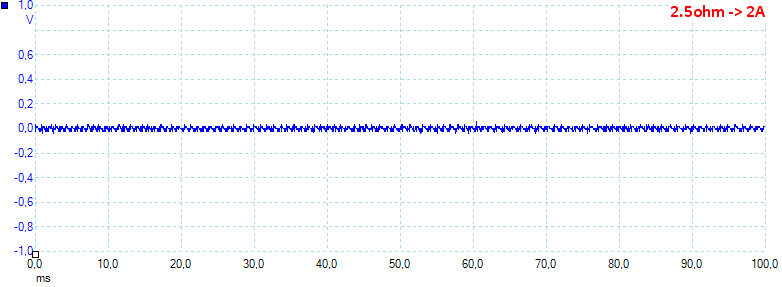
The rms noise is 20mV and there is 140mVpp, all very low values.
Conclusion
The charger generally works fine, but there is a couple of issues: It cannot charge with 2A, it is more like 1.2A. The documentation around LiFePO4 is missing from the manual.
The power bank function works fine, but do not leave the batteries in the charger.
As long as 1A charging current is enough I will call it a good charger.
Notes
Here is an explanation on how I did the above charge curves: How do I test a charger

































































